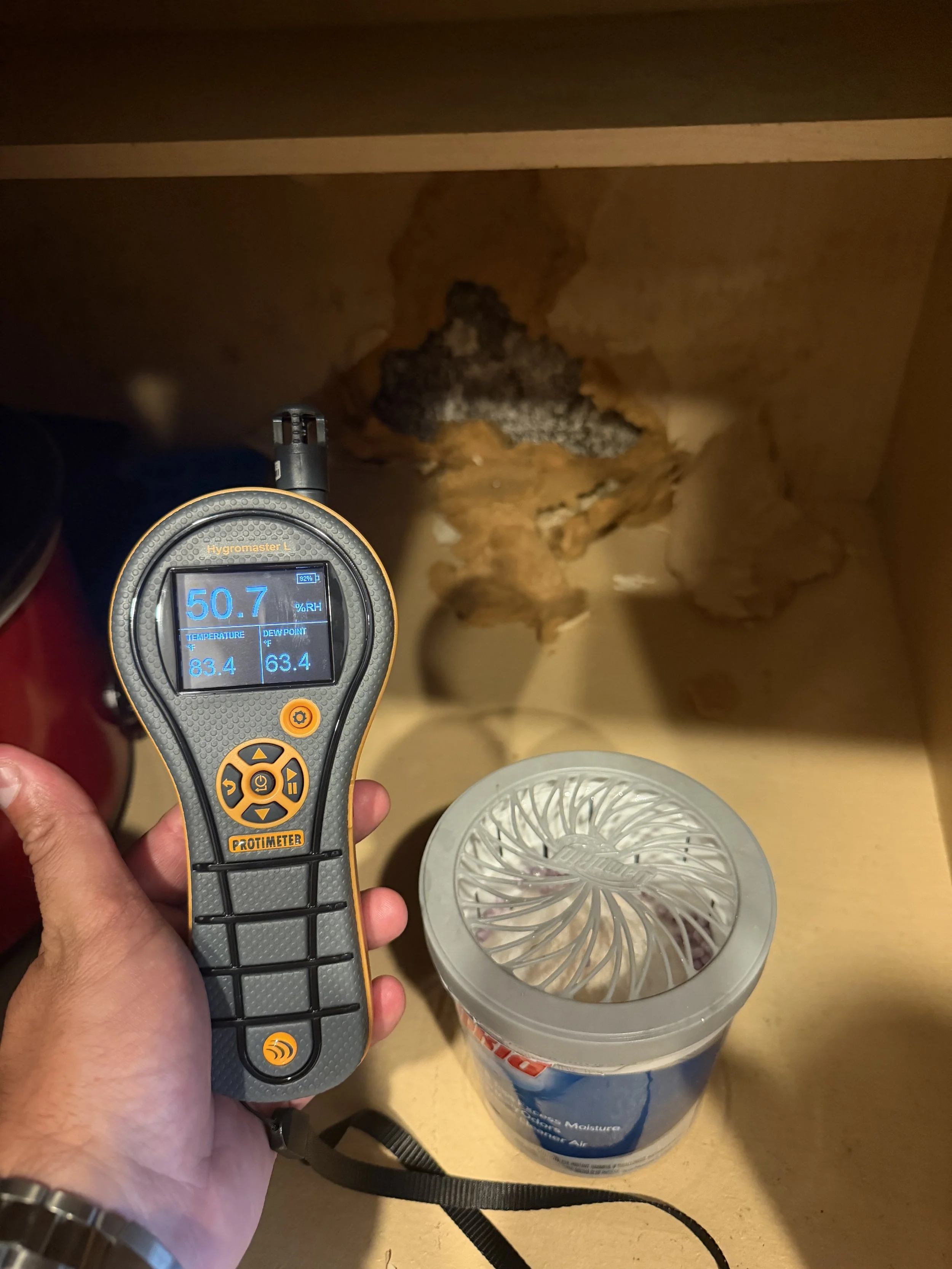When Water Damage Leads to Mold: What Homeowners Need to Know
Imagine coming home to find a burst pipe soaking your floors or walls. You shut off the water and call for help—but within 24 to 48 hours, another hidden danger can begin to take hold: mold growth.
Mold doesn’t just look bad—it can trigger allergies, cause unpleasant odors, and damage the structure of your home. Understanding what happens after a water loss can help you act quickly and protect your property.
Why Mold Grows After Water Damage
When water from a broken supply line or appliance leaks into drywall, flooring, or insulation, these materials begin to absorb and retain moisture. According to the ANSI/IICRC S500 Standard for Professional Water Damage Restoration, once materials remain wet for extended periods, microbial amplification—including mold—can occur, posing both structural and health risks.
Mold spores are naturally present in indoor air. When they find a damp, organic surface and the right temperature (often between 68–86°F), they begin to colonize. Even “clean” Category 1 water can support microbial growth if drying is delayed.
The Professional Drying and Mitigation Process
A certified water damage restoration company follows a systematic process guided by the S500 Standard to prevent mold and restore the home to a safe, dry condition.
1. Inspection and Moisture Mapping
Professionals use moisture meters, hygrometers, and thermal imaging cameras to detect where water has migrated—even behind walls or under floors. This step defines the “affected area” and determines how much drying is needed.
2. Extraction of Standing Water
Technicians remove as much liquid water as possible using high-capacity extractors and pumps, which speeds up the entire drying process. The more water that’s physically removed, the less time evaporation takes later.
3. Humidity Control and Dehumidification
As evaporation begins, humidity in the air increases. Dehumidifiers—often low-grain refrigerant (LGR) or desiccant units—pull moisture from the air to maintain proper humidity ratios and prevent secondary damage or microbial growth.
4. Structural Drying
Air movers are strategically placed to create high-velocity airflow across wet surfaces. This accelerates evaporation and ensures even drying across materials. Technicians adjust airflow, temperature, and equipment placement daily to hit specific drying goals.
5. Cleaning and Antimicrobial Application
In some cases, especially if water sat for a while, restorers may apply an EPA-registered antimicrobial treatment to clean surfaces and inhibit future mold growth—always according to label directions and client consent.
6. Ongoing Monitoring
Daily moisture readings and psychrometric data (temperature, relative humidity, and vapor pressure) are recorded until all affected materials reach a dry standard—the normal moisture level for those materials prior to damage.
Tools of the Trade: What Professionals Use
Moisture Meters & Sensors: Measure how much water is in materials like drywall or wood.
Infrared Cameras: Identify hidden wet spots behind walls or ceilings.
Thermo-Hygrometers: Track temperature and humidity to monitor drying conditions.
Air Movers: Push dry air across wet surfaces for faster evaporation.
Dehumidifiers: Pull moisture from the air to keep humidity under control.
HEPA Air Scrubbers: Filter airborne particles, mold spores, and odors to improve indoor air quality.
Preventing Mold After a Water Loss
The key to preventing mold is speed. The S500 emphasizes rapid response—ideally within the first 24 hours of a water intrusion—to remove excess moisture and stabilize the environment. Homeowners can help by:
Shutting off the water source immediately
Contacting a certified restoration company
Avoiding DIY drying (household fans aren’t enough)
Notifying insurance promptly to expedite professional service
When Mold Is Already Present
If visible mold is discovered, restoration work transitions into mold remediation, following the ANSI/IICRC S520 Standard for Professional Mold Remediation. At this stage, containment, air filtration, and removal of contaminated materials are required for safe cleanup.
Final Thoughts
A burst pipe can feel like a disaster—but with professional water mitigation, the structure can be fully restored, and mold growth can be prevented. Restoration experts don’t just dry your home; they create a controlled environment that safeguards both your property and your family’s health.
If you experience water damage, act fast and call a certified restoration company trained to follow the ANSI/IICRC S500 Standard. Quick action is the difference between a minor inconvenience and a major mold problem.
